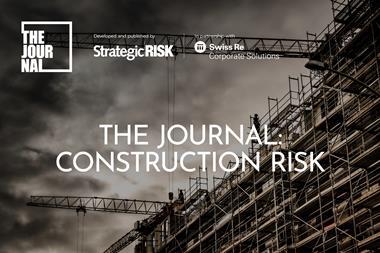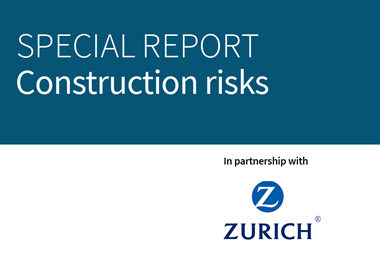Alex Sidorenko sets out a three-step methodology for applying Monte-Carlo simulations to quantitative risk analysis
Risk management 2 shouldn’t be difficult. So I began a quest to come up with a simple methodology for quantitative risk analysis that will actually improve decision making.
This is my proposal for a simple methodology - still a work in progress - to get to know Monte-Carlo simulations and start thinking in distributions and the probability of achieving objectives. This methodology is most suitable for investment project risk analysis.
Step 1 – Key assumptions check
First step involves expert ranking of the common assumptions from the list below against key project or decision assumptions:
Strategic risks
- Changes in demand, competition, change in product application to different markets
- Sanctions or tariffs, affecting our ability to sell to some markets
Market risks
- Product price volatility
- FX risks
- Inflation
- Raw materials price volatility
- Raw materials availability
- Logistics cost volatility
Operational risks
- HSE, incidents affecting capacity, production uptime or fines
- Lack of qualified personnel affecting operating costs
- Increase in processing costs
- Taxes, delay getting government tax and financing benefits
- Maintenance cost volatility
Construction related risks
- Delayed start-up
- Increase in third-party CAPEX amount
- Increase in own CAPEX amount
- Longer ramp-up
Specific risks for brownfield projects:
- Limitation on productive work periods and use of common infrastructure
- Impact on main production volumes or quality
- SIMOPS (simultaneous operations)
Step 2 – Add volatility to assumptions
Depending on the assigned significance or uncertainty (Low, Medium, High) for each key assumption, the corresponding volatility is added to the project financial model (e.g. some assumptions may have low volatility and others high).
Many of the key assumptions are either positively or negatively correlated and may be moving together increasing the overall risk exposure.
We account for uncertainty in the project financial model via simple rules:
| Key assumptions | Low | Medium | High |
|---|---|---|---|
|
Changes in demand, competition, change in product application to different markets |
No effect |
Moderate reduction in premiums / volumes sold |
Significant reduction in premiums / volumes sold |
|
Sanctions or tariffs, affecting our ability to sell to some markets |
No effect |
Moderate reduction in premiums / volumes sold |
Significant reduction in premiums / volumes sold |
|
Product price volatility |
Delta change from year to year equal to inflation |
Delta change from year to year +/- equal to inflation +1.5% |
Delta change from year to year +/- equal to inflation +2.5% |
|
FX risks |
Volatility equal to inflation (both positive and negative) |
Delta change from year to year +/- equal to inflation +1.5% |
Delta change from year to year +/- equal to inflation +2.5% |
|
Inflation |
Volatility equal to inflation (both positive and negative) |
Delta change from year to year +/- equal to inflation +1.5% |
Delta change from year to year +/- equal to inflation +2.5% |
|
Raw materials price volatility |
Equal to inflation |
Inflation +1.5% |
Inflation +2.5% |
|
Raw materials availability affecting the time of the start-up |
Min: 95% Mode: 100% Max: 105% |
Min: 100% Mode: 105% Max: 110% |
Min: 100% Mode: 105% Max: 120% |
|
Logistics cost volatility |
Equal to inflation |
Inflation +1.5% |
Inflation +2.5% |
|
HSE, incidents affecting capacity, production uptime or fines |
Min: 95% Mode: 98% Max: 100% |
Min: 90% Mode: 95% Max: 100% |
Min: 80% Mode: 95% Max: 100% |
|
Lack of qualified personnel affecting operating costs |
Min: 100% Mode: 102% Max: 105% |
Min: 100% Mode: 105% Max: 110% |
Min: 100% Mode: 105% Max: 120% |
|
Increase in processing costs |
Min: 95% Mode: 100% Max: 105% |
Min: 100% Mode: 105% Max: 110% |
Min: 100% Mode: 105% Max: 120% |
|
Taxes, delay getting government tax and financing benefits |
Same as base case |
Higher probability to less favourable tax regime |
Even higher probability to less favourable tax regime |
|
Delayed start-up |
Min: 95% Mode: 100% Max: 105% |
Min: 100% Mode: 105% Max: 110% |
Min: 100% Mode: 105% Max: 120% |
|
Increase in 3rd party CAPEX amount |
Min: 95% Mode: 100% Max: 105% |
Min: 100% Mode: 105% Max: 110% |
Min: 100% Mode: 105% Max: 120% |
|
Increase in own CAPEX amount |
Min: 95% Mode: 100% Max: 105% |
Min: 100% Mode: 105% Max: 110% |
Min: 100% Mode: 105% Max: 120% |
|
Longer ramp-up |
Min: 95% Mode: 100% Max: 105% |
Min: 100% Mode: 105% Max: 110% |
Min: 100% Mode: 105% Max: 120% |
|
Specific risks for brownfield projects affecting start-up time or CAPEX |
Min: 95% Mode: 100% Max: 105% |
Min: 100% Mode: 105% Max: 110% |
Min: 100% Mode: 105% Max: 120% |
The above is just an illustration, we will obviously need to calibrate the estimates and will continue to update the ranges.
Step 3 – Run simulation
The next step is to run simulation using free ModelRisk or free SIPmath. To learn how to use them watch RAW2020.
Do you think this will work? Share your thoughts.




















1 Readers' comment